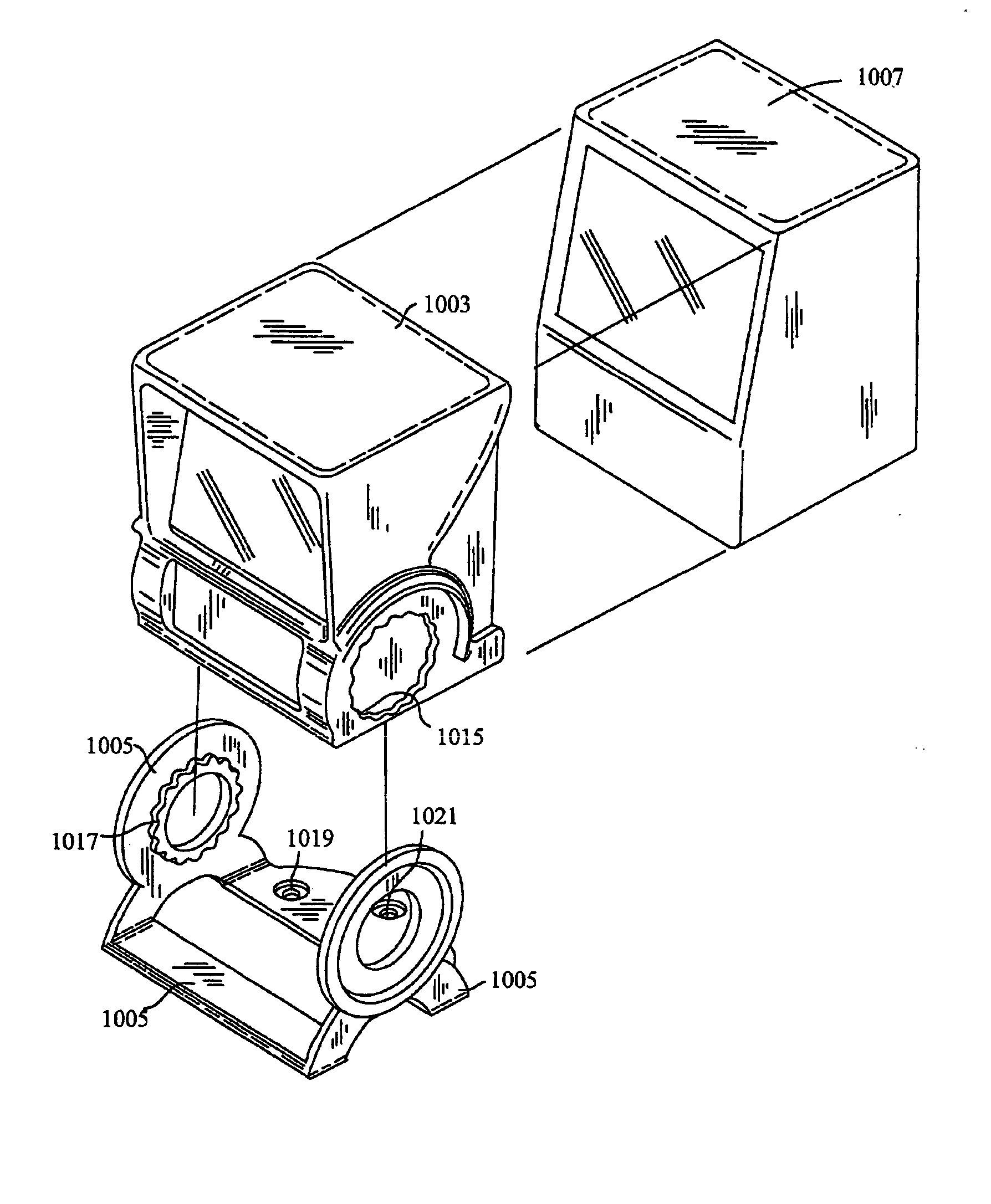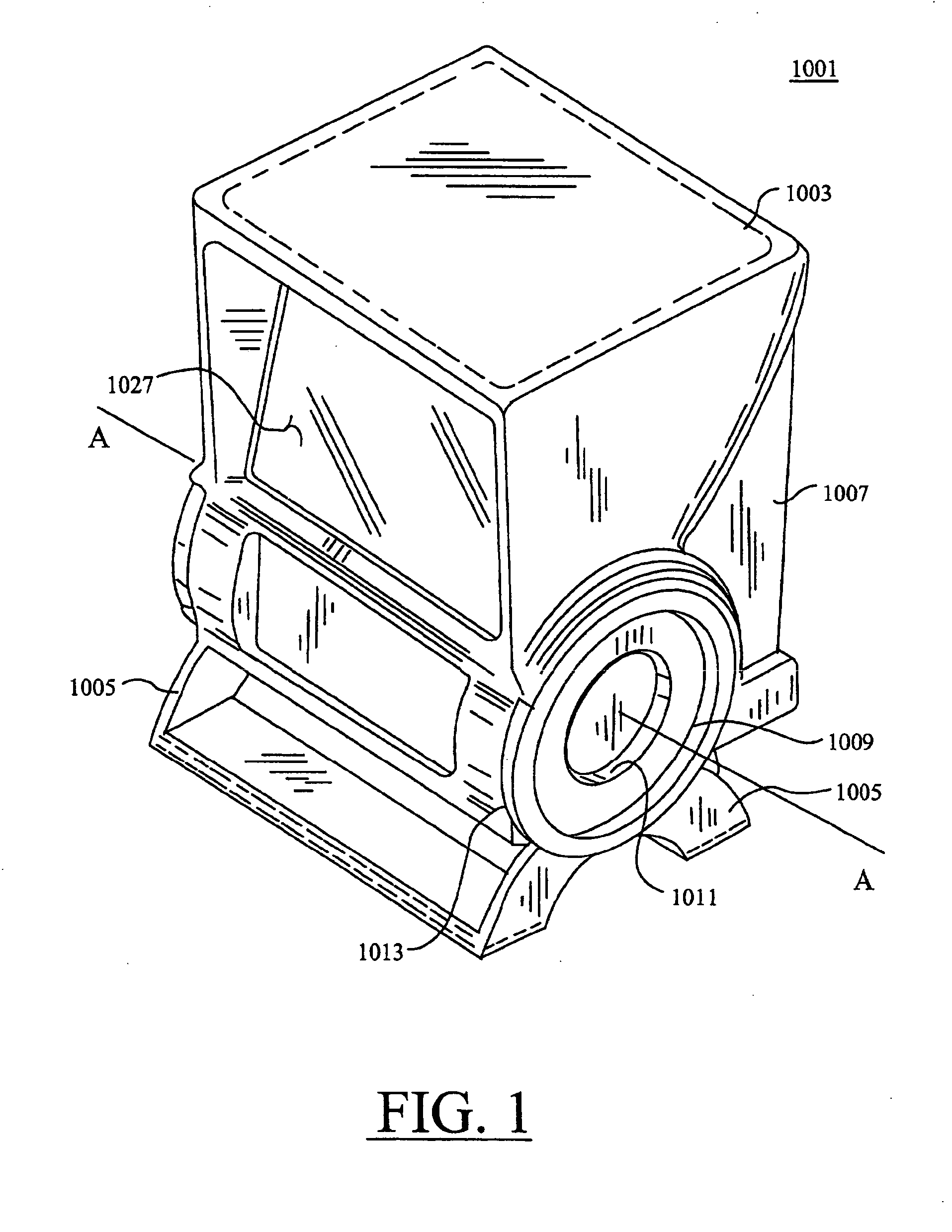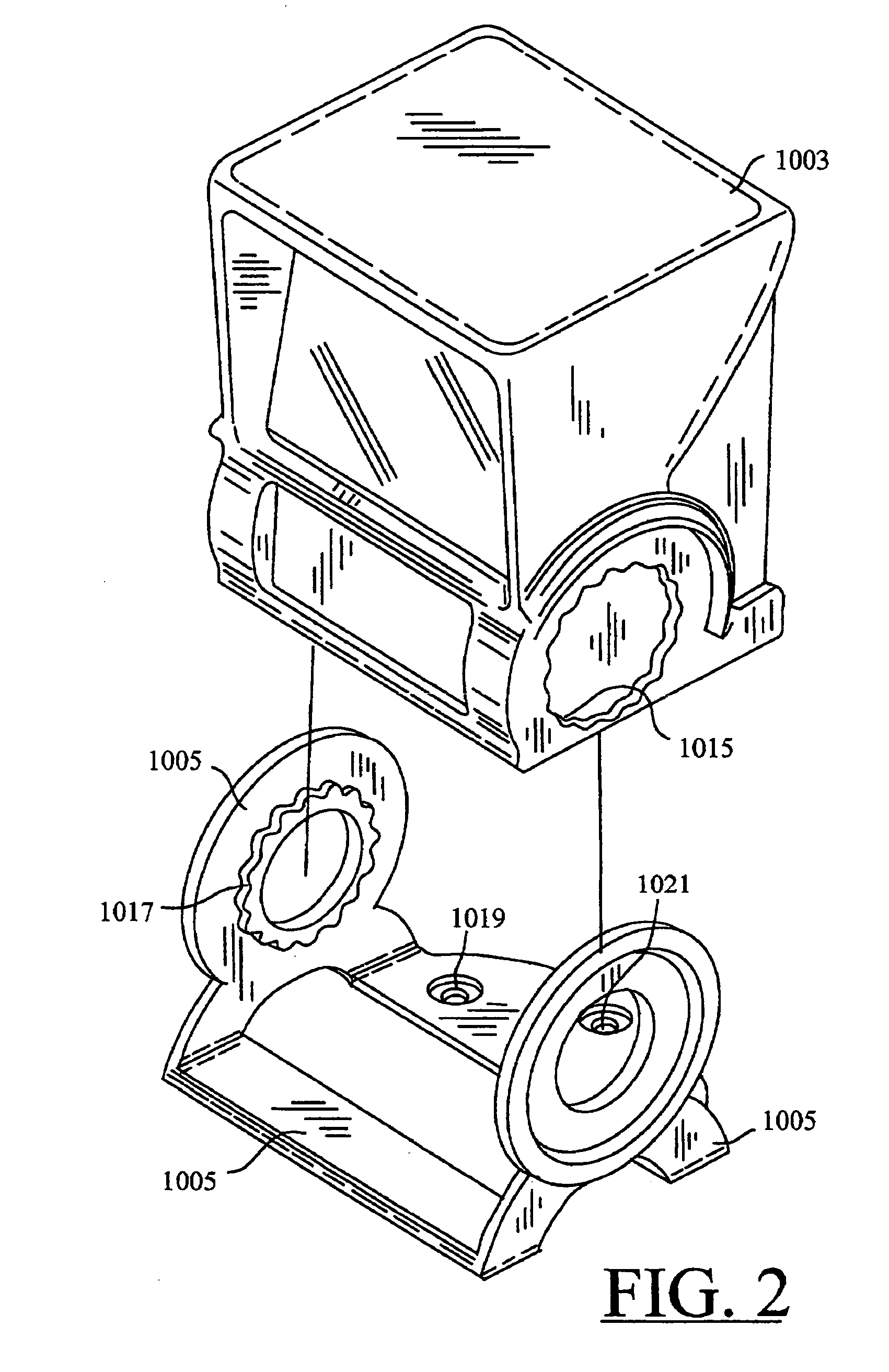Counter-top scanner with bump protection mechanism and scan angle adjustment mechanism
a counter-top scanner and bump protection technology, applied in the field of laser scanning systems, can solve the problems of scanner dropping, bumping, and crashing of scanners, and many existing bar code scanner designs are inadequately equipped to deal with mechanical strains and stresses of day-to-day use, and achieve the effect of reducing the performance of scanners, and reducing the number of bumps
- Summary
- Abstract
- Description
- Claims
- Application Information
AI Technical Summary
Benefits of technology
Problems solved by technology
Method used
Image
Examples
first embodiment
[0091]FIG. 1 is a perspective view of a multi-purpose bar code scanner 1001 that is hand-supportable, free-standing, and / or mountable, wherein the scanner is configured according to the invention. The scanner has a housing 1007 that is adjustably mounted to a movable bracket 1005, in the sense that bracket 1005 is movable relative to housing 1007. Accordingly, if movable bracket 1005 is mounted to a fixed surface such as a countertop, the movable bracket 1005 will remain fixed, but will permit adjustment of housing 1007 to any of a plurality of positions. One or more of these positions aim a window 1027 of housing 1007 towards the countertop surface and / or a point-of-sale area. Housing 1007 is equipped with a shock-absorbing mechanism in the form of protective sheath 1003. Protective sheath 1003 may be fabricated of rubber, flexible plastic, and / or any of various other materials capable of absorbing mechanical shock. Protective sheath 1003 may be fabricated so as to permit removal o...
second embodiment
[0097] Refer now to FIG. 5, which is a perspective view of a multi-purpose bar code scanner 10 that is hand-supportable, free-standing, and / or mountable. The scanner includes a housing that is configured according to the invention and has a substantially omnidirectional laser scanning platform mounted therein. Scanner 10 includes a scanning head 12 that is rotationally connected to a base unit 60. Scanning head 12 houses various associated optical components of the omnidirectional laser scanning platform as will be described in greater detail hereinafter.
[0098]FIGS. 5 through 8 set forth the general construction of the scanner housing. Scanning head 12 has an aperture 11 through which a substantially omnidirectional scanning pattern is projected. Scanning head 12 is formed in a generally spherical configuration with a flat front window 14 and top-mounted LED power and good read indicator 50. Head unit 12 is preferably molded of hard plastic or the like, and can be formed in two half...
third embodiment
[0141]FIG. 20, shows a third hardware embodiment for implementing an omnidirectional laser scanning platform mountable in the housing of the bar code scanners of FIG. 1 and / or FIG. 5. An automatically-activated bar code symbol scanning platform 100 pursuant to this third embodiment comprises a number of subsystems, namely: a laser-based bar code symbol detection subsystem 101; a laser-based bar code symbol reading subsystem 102; a data transmission subsystem 103; a state indication subsystem 104; a data transmission activation switch or control device 105A integrated with the scanner housing (not shown) in part or whole; a mode-selection sensor 105B integrated with the scanner housing in part or whole; and a system control subsystem 106 operably connected to the other subsystems described above. In general, the system 100 has a number of preprogrammed states of operation, namely: an object detection state; a bar code symbol detection state; a bar code symbol reading state; and a dat...
PUM
 Login to View More
Login to View More Abstract
Description
Claims
Application Information
 Login to View More
Login to View More - R&D
- Intellectual Property
- Life Sciences
- Materials
- Tech Scout
- Unparalleled Data Quality
- Higher Quality Content
- 60% Fewer Hallucinations
Browse by: Latest US Patents, China's latest patents, Technical Efficacy Thesaurus, Application Domain, Technology Topic, Popular Technical Reports.
© 2025 PatSnap. All rights reserved.Legal|Privacy policy|Modern Slavery Act Transparency Statement|Sitemap|About US| Contact US: help@patsnap.com



